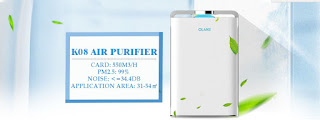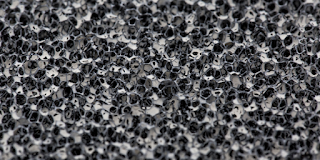how to evaluate air purifier?
Before you resort to buying an air purifier, try some simple steps to reduce indoor air irritants,including:
Vacuum often and thoroughly with a vacuum with HEPA filtration.
Ban smoking indoors.
Maintain your heating and cooling equipment and change air filters regularly.
Minimize use of candles and wood fires.
Use exhaust fans in kitchen, bath, and laundry areas.
Don't store chemicals, solvents, glues, or pesticides near your living quarters.
If pollen or related allergies keep you from opening windows, run your air conditioner or forced-air cooling system with a clean air filter.
The Pros and Cons
Pros: They’re portable—most room air purifiers weigh from 10 to 20 pounds, have a handle, and stand on the floor or on a table, while heavier models might have wheels.
Many have a high-efficiency particulate air (HEPA) filter, which can capture ultrafine particles. Keep in mind: Most HEPA filters need to be replaced annually, an expense that might approach the cost of the air cleaner, but a few models are now available with cleanable HEPA filters.
Cons: Portable models that use either electrostatic-precipitator or ionizer technology could produce some ozone, a lung irritant.
Dedicated ozone generators, a subcategory of room models, produce large amounts of ozone by design. According to manufacturers, that is to reduce allergens such as dust, smoke, pollen, germs, and mold. Ozone, however, is a serious health concern, prompting the State of California to ban the sale of ozone generators (and other air purifiers that emit more than 50 parts per billion of ozone) from the general market.
Things to consider
Operating costs
Keep it clean
Quietness counts
Room Air Purifier Features
Fan: Most room air cleaners use a fan to suck in air for filtration. Those without a fan (the air circulates naturally throughout your home) run more quietly, but those we tested without fans worked poorly.
Servicing indicator: A clogged air cleaner works inefficiently. This feature lets you know when the unit needs to be cleaned or the filter replaced.
Programmable timer: These controls allow you to set the purifier to run a few hours before you’ll be using a room, or turn it off automatically.
Carrying handle: Makes it easy to move unit from room to room.
Number of speeds: The unit adjusts to your air-cleaning needs—lower when you are sleeping or working and need quiet, higher when it’s prime pollen time.
Ionizer: If a unit has an ionizer (which attracts particles via an effect like static electricity), it’s important that it not produce ozone (it may say on the box or in an operation manual; you can also check our ratings). Ozone is a possible lung irritant.
Remote control: Lets you easily adjust settings from across the room.
Dirt sensor: In some room models, the unit automatically adjusts fan speed to the level of dirt or dust in the air.
Washable pre-filter: A washable—and reusable—pre-filter collects large particles; if it’s washable, it can help cut overall costs. However, many of our higher-rated models did not have this option.
Clearing the Air
What They Do Well
The better air purifiers are especially good at filtering pollutant particles such as dust, smoke from candles or fireplaces, and pollen.
What’s Not So Great
Volatile organic compounds (VOCs) from adhesives, paints, and cleaning products, and other types of gaseous pollutants, however, are another matter. Some portable models with carbon pre-filters are claimed to filter VOCs, but the Environmental Protection Agency warns that such filters are specific to certain gaseous pollutants, not for others, and that no air purifier is expected to remove all gaseous pollutants found in the typical home. Carbon filters also must be replaced often, typically every 3 to 6 months, or they stop working.
What the Terms Mean
The Association of Home Appliance Manufacturers certifies most room models as part of a voluntary program that includes appropriate room size and maximum clean-air delivery rate (CADR), a measure of cleaning speed. We judge a CADR above 350 to be excellent and below 100 to be poor. Choose a model designed for an area larger than yours for better cleaning at a lower, quieter speed.
please visit www.olansigroup.com for more information.
Or contact Melody Xue
Email:meldoy@olansigroup.com
Mobile/Whatsapp:+86 138 2478 4081
Wechat:melody001106
Vacuum often and thoroughly with a vacuum with HEPA filtration.
Ban smoking indoors.
Maintain your heating and cooling equipment and change air filters regularly.
Minimize use of candles and wood fires.
Use exhaust fans in kitchen, bath, and laundry areas.
Don't store chemicals, solvents, glues, or pesticides near your living quarters.
If pollen or related allergies keep you from opening windows, run your air conditioner or forced-air cooling system with a clean air filter.
The Pros and Cons
Pros: They’re portable—most room air purifiers weigh from 10 to 20 pounds, have a handle, and stand on the floor or on a table, while heavier models might have wheels.
Many have a high-efficiency particulate air (HEPA) filter, which can capture ultrafine particles. Keep in mind: Most HEPA filters need to be replaced annually, an expense that might approach the cost of the air cleaner, but a few models are now available with cleanable HEPA filters.
Cons: Portable models that use either electrostatic-precipitator or ionizer technology could produce some ozone, a lung irritant.
Dedicated ozone generators, a subcategory of room models, produce large amounts of ozone by design. According to manufacturers, that is to reduce allergens such as dust, smoke, pollen, germs, and mold. Ozone, however, is a serious health concern, prompting the State of California to ban the sale of ozone generators (and other air purifiers that emit more than 50 parts per billion of ozone) from the general market.
Things to consider
Operating costs
Keep it clean
Quietness counts
Room Air Purifier Features
Fan: Most room air cleaners use a fan to suck in air for filtration. Those without a fan (the air circulates naturally throughout your home) run more quietly, but those we tested without fans worked poorly.
Servicing indicator: A clogged air cleaner works inefficiently. This feature lets you know when the unit needs to be cleaned or the filter replaced.
Programmable timer: These controls allow you to set the purifier to run a few hours before you’ll be using a room, or turn it off automatically.
Carrying handle: Makes it easy to move unit from room to room.
Number of speeds: The unit adjusts to your air-cleaning needs—lower when you are sleeping or working and need quiet, higher when it’s prime pollen time.
Ionizer: If a unit has an ionizer (which attracts particles via an effect like static electricity), it’s important that it not produce ozone (it may say on the box or in an operation manual; you can also check our ratings). Ozone is a possible lung irritant.
Remote control: Lets you easily adjust settings from across the room.
Dirt sensor: In some room models, the unit automatically adjusts fan speed to the level of dirt or dust in the air.
Washable pre-filter: A washable—and reusable—pre-filter collects large particles; if it’s washable, it can help cut overall costs. However, many of our higher-rated models did not have this option.
Clearing the Air
What They Do Well
The better air purifiers are especially good at filtering pollutant particles such as dust, smoke from candles or fireplaces, and pollen.
What’s Not So Great
Volatile organic compounds (VOCs) from adhesives, paints, and cleaning products, and other types of gaseous pollutants, however, are another matter. Some portable models with carbon pre-filters are claimed to filter VOCs, but the Environmental Protection Agency warns that such filters are specific to certain gaseous pollutants, not for others, and that no air purifier is expected to remove all gaseous pollutants found in the typical home. Carbon filters also must be replaced often, typically every 3 to 6 months, or they stop working.
What the Terms Mean
The Association of Home Appliance Manufacturers certifies most room models as part of a voluntary program that includes appropriate room size and maximum clean-air delivery rate (CADR), a measure of cleaning speed. We judge a CADR above 350 to be excellent and below 100 to be poor. Choose a model designed for an area larger than yours for better cleaning at a lower, quieter speed.
please visit www.olansigroup.com for more information.
Or contact Melody Xue
Email:meldoy@olansigroup.com
Mobile/Whatsapp:+86 138 2478 4081
Wechat:melody001106


评论
发表评论